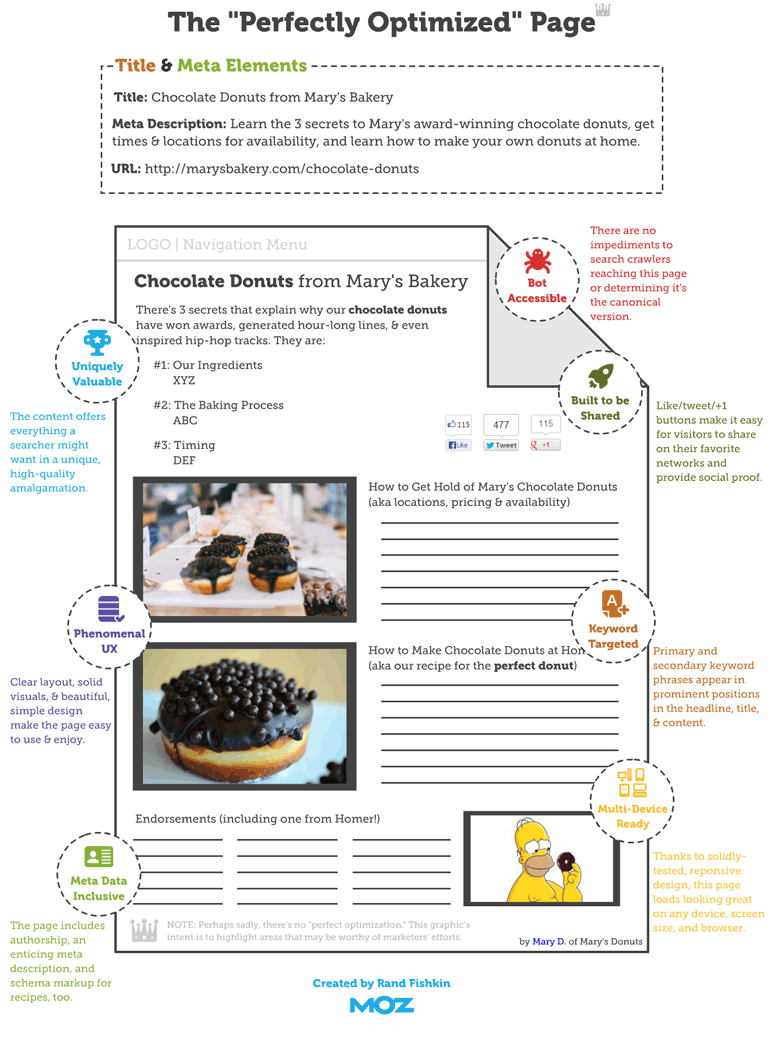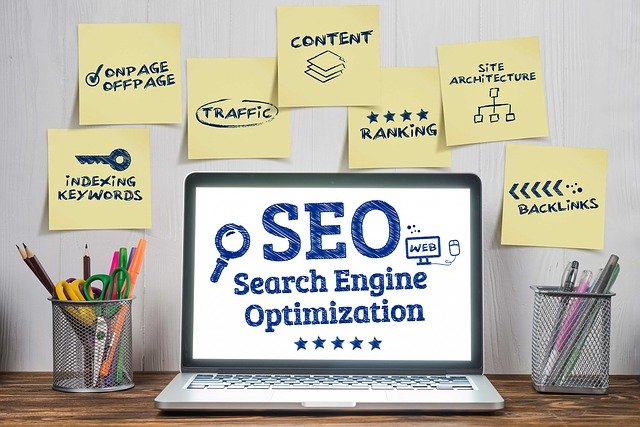
Google is more than just optimizing your title. Google will crawl your site to search for keywords. A basic SEO strategy is essential to make your content easier to index and show. Headings are another area you should focus on when optimizing your blog for SEO. They allow readers to flow through the content, and search engines to understand the hierarchy of your reading. Be sure to use keywords and phrases when creating headings.
Meta description
When writing your meta description for SEO blog, make sure to use an organic tone. Your meta description will answer the query of a user and highlight high-quality content. Websites that look like spam are a negative impression on users. If you follow the golden rule of writing for people rather than robots, you will receive more clicks. Here are some suggestions to help you craft a compelling meta-description.
Make it interesting: Use your main keyword in your meta description. Google does not count your meta description when indexing your page, but it does help to draw a user's attention. The most important thing is to keep your meta descriptions between 140 and 160 characters. The description should also include a call to action, such as a link to your website. A good meta description also has an appealing call to action.
You can advertise your company by using the meta description. It is a great opportunity to get a user to click on your link and grab their attention. A quality meta description will increase website traffic and help you sell more. To encourage users to act, the meta description should end with a call-to-action. Your meta description can be rendered useless if your description is too lengthy or contains outdated information.
A meta description is not only readable but can also increase click-through rates. Properly using the meta description can increase both your organic traffic, and your ranking. The meta description is a minor role in Google's search engine results. Your page may be ranked on page four if your meta description isn't optimized. If your blog has a low click-through rate, it is still worthwhile to add a meta description.
Keywords in the title
Make sure you are using focused keywords in the title. This will help you get the most out your SEO blog post. The title of your article will help you determine the direction of the content and the likelihood that it will reach your target audience. Search engines categorize web pages based the keywords included in them. These crawlers use advanced technology to determine the quality of web pages. It is important to include targeted keywords in the title of your articles to improve their search ranking.
If you own a gym, use phrases related to crossfit training or crossfit gyms. Make sure to use one keyword per article. Using too many keywords in the same article can look spammy to the search engines, which makes your content less valuable to your readers. Articles with long-tail keywords rank better than articles with short-tail terms. This is a great way of ranking higher for a keyword on Google.
Keep the title of your SEO blog between 60 and 70 characters. The title tag must include the focus keyword at the beginning. Additionally, the chosen keyword should communicate the benefit of your post. Keyword stuffing and boilerplate titles are a bad practice, and Google warns against keyword stuffing. Therefore, make sure you use a strong focus keyword in your title and make sure that your audience can understand what it will get from your content.
Putting your keywords in the title is just half the battle. Your article's title should have a good length, not more than 60 characters or 575 pixels. You should make sure that your title fulfills the promise made in the title. It should also be easy for people to scan and read. SEO is about planning. You should make sure that your title is as effective and relevant as possible.
Internal links

There are many ways to improve the search engine optimization (SEO) of your website or blog. You can use internal links to redirect users to other pages of your website. These links can be used to direct users to different pages or products. This improves user experience and increases search performance. Remember that internal links do not work the same as backlinks and readers will be unable to find them by themselves. But using internal links in the right places is one way to achieve this.
SEO-friendly SEO tips include adding internal links to your blog. This will help you attract and keep readers. Different styles are used by different sites for linking, so it's important to use the correct anchor text and words when creating a strategy. Internal links are a great way to grab your readers' attention and keep them on your website longer. Internal links should point back towards relevant content and offer users a solution.
If possible, the internal links should point directly to the main target keywords. Google will not penalize users who use exact-match keywords, but it is possible that they will. However, it should not be keyword-stuffed. You should not manipulate your anchor text in order to improve your rankings. This tactic is against Google's webmaster guidelines. This is a more efficient method than you might realize.
The creation of content on topics relevant to your core service is another way to optimize internal linking. An example: A Columbus landscaping business generates 390 searches per month. This is significantly less than the search volume generated by the phrase "best phone". Your SEO efforts can be improved by strategically including links to internal pages in your blog posts. One way to do so is to anticipate the questions users will ask when they visit your website.
Schema markup
Schema Markup can be added to blog posts to improve your search engine rankings. To create schema markup, visit Google Structured Data Markup Helper. You can enter your website URL, select a category, and then paste the HTML code. This tool creates a tag manipulator as well as a rendered page in new windows. Click on individual elements to mark them.
There are three types in schema markup: NewsArticle TechArticle & Microdata. Each type can have a different set of flags, depending on the content of the post. NewsArticle, on the other hand, is for articles that cover current events. TechArticle might have flags that indicate what technical content is in an article. For example, a HowTo article may have flags that indicate the author's technical level, the program used, and any dependencies.
Google has made it much easier to create schema. It allows you to tag data so that similar content is displayed in search results. Schema markup is highly recommended for blog posts in order to increase brand awareness. But if you're a small business that has a local location, you should use schema to advertise your business. You can also use the schema to promote your events and business. Schema markup can be used in SEO blog posts for many benefits. The links below will guide you through the process of selecting the right schema markup.
You can also use schema to optimize content. The markup helps search engines understand the different elements of a site. If you're blogging about food, for example, you can use schema markup to identify ingredients, instruction steps, nutritional values, and ketogenic diets. Schema is also useful for reviewing blogs. You can also use schema to help your review blog rank higher in search engines.
Copyrights for images

It is crucial to verify the permission of any images you plan on using for your SEO blog. Many PR agencies will not allow you to share images from their sites. To find out who owns the image, contact them directly. Most times the owner is happy to give permission for you to use the photo. Here are some tips to help you comply with the law:
Google images should not ever be used. Before using an image on your site, you should get permission from the owner. Google allows you to search for images, but you have to obtain permission to use them. If you have difficulty finding the image required, you can ask permission to visit the page that it is hosted. This will ensure you don't violate any copyrights. The difference between a successful SEO website and one that is blocked by search engines can be made with image copyrights.
It is important to ensure you verify the copyrights to any image that will be used on your blog. While it might be tempting to use images found on Google Images, it's illegal. If you take images without permission, it can discredit the work of the creators and expose you to legal repercussions. If you have permission from the owner, you can use fair-use or public domain photos. An intellectual property attorney can help you if you still have questions.
Images that are used in SEO blogs must have the same author as the attribution. Photos that are funny or creative will be more likely to get used for SEO purposes. However, you should always read the terms of the license. There are some images that you can use for free, but others have restrictions. You shouldn't use any images unless you know who the author is. You may be violating the copyright if they are not royalty-free. Even worse, you could face a lawsuit, which will cost you a lot of money.
FAQ
What is an SEO campaign?
Content is an essential component of any website. If you don't have relevant and useful information on your site, you won't rank high enough for searches.
SEO campaigns help optimize your site by obtaining links back from other websites. It also includes social media SEO, which is the use of Twitter, Facebook, LinkedIn and LinkedIn to increase brand awareness and drive traffic.
These links will bring more people to your site and increase your ranking. SEO campaigns focus on building quality backlinks to your site in order for Google to recognize your website's value.
What is a PPC advertising?
Pay-per click ads are text-based adverts that appear at the top and bottom of pages.
These ads are extremely targeted so advertisers only pay for clicks.
PPC advertising can be very similar to Pay Per Call marketing, which we will discuss later.
What's the time frame for PPC Advertising to produce results?
Paid search result pages take longer than organic search because they don't have a natural flow. When someone searches for something, they expect to see the most relevant results at the top of the page. Paid search results must work harder to convince people that they should pay money to advertise on their site.
Where can I find my keywords?
You'll need to consider what kind of products or services you offer and who your ideal customer is, and then look for standard terms related to those things. Once you've got your list of phrases, you can use tools like Google Keyword Planner to see what phrases people are searching for or go directly to popular search engines like Bing, Yahoo, and DuckDuckGo.
Why should I use SEO
There are many reasons you should use SEO.
First, it helps increase the number of visitors to your website by making sure that your website appears high in search engine results.
The second benefit is that it increases conversions by making sure users find the exact information they need when they enter their search bar.
It helps customers find you online, which increases brand awareness.
It also improves the user experience by allowing users to navigate quickly through your website.
Finally, it builds trust among potential customers by showing that you care enough about your business to ensure it ranks well in search engines.
How do you start SEO on your website?
It is important to understand the needs of people searching for your company or products through search engines like Google. This will help you get a Google ranking. This guide will help to make sure your content is ranked highly by Google. Check out our other guides to content marketing.
To get started, you need to create a plan. Then think about which keywords you want. There are two types keywords: broad keywords, such as "digital marketing", and more specific keywords, like "seo".
The next step is to determine your goals, which could be increasing brand awareness, driving leads or sales.
Once you've defined your objectives, you're ready to start writing content! We have some tips on how to write content for SEO here.
Once you've written your content, it's time for it to be published to your blog or website. If you already have a website, updating the pages might be necessary. If you don't have a website, you will need to hire someone who can design one.
After you publish your content, link back to it on relevant blogs and websites. This will increase its visibility and give it greater exposure.
What Is an SEO Campaign?
An SEO campaign is a series of activities designed to improve the visibility of a particular webpage or domain name in search engines like Google, Bing, Yahoo, and others. These activities include optimizing title tags, meta descriptions tags, URL structure and page content.
Search engine optimization campaigns often begin with keyword research. Keyword research identifies keywords likely to increase organic search traffic. Once keywords have been identified, they must be optimized throughout the entire website, from the homepage to individual pages.
Statistics
- 64% of marketers actively create SEO campaigns because they help hit multiple key performance indicators (KPIs), including increasing traffic, helping your site rank for relevant keywords, improving your conversion rate, and much more. (semrush.com)
- A 62.60% organic traffic boost to that page: (backlinko.com)
- Deleting those 10k pages is one of the main reasons that he improved his site's organic traffic by nearly 90%: (backlinko.com)
- Sean isn't alone… Blogger James Pearson recently axed hundreds of blog posts from his site… and his organic traffic increased by 30%: (backlinko.com)
- These guides are designed and coded 100% from scratch using WordPress. (backlinko.com)
External Links
How To
How to create a successful SEO campaign
Creative writing requires that you know how to set yourself apart from the rest.
Most writers are very similar. Writers tend to use the same writing patterns. They fall back to cliches and repeat themselves.
You need to get out of your ruts and create new ideas. It's about thinking outside the box.
You should also look for interesting ways to make writing more interesting. Write for your audience by considering what makes them tick. What makes them happy? What makes them laugh? What makes them cry?
What is it that excites them? What scares them?
These are the questions you should ask yourself when you write. Next, ask yourself why someone cares about what you are saying. Why would someone read your words and not others?
Once you've figured that out, it's time to start crafting your story.
Start with your hook. Your opening line should be a key part of your message. It is the first impression readers get. Be wise when choosing.
Next, decide whether or not your piece will be informative. Informational pieces explain facts. Persuasive writing convinces readers to follow your lead.
Final, choose whether you want to tell stories or show examples. Stories are thrilling. Exemples show how something works.